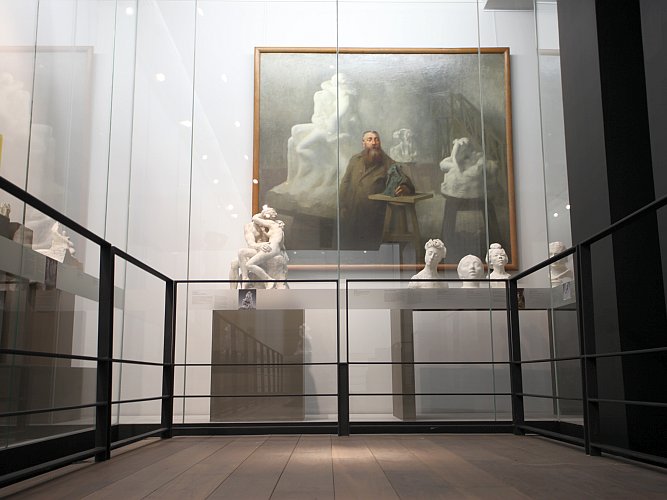PARIS—The new Terminal 2E at Paris-Charles de Gaulle Airport launched its art museum Espace Musées on Jan. 15, a space to showcase the best of French art.
The idea is not as innovative as it is ambitious. Amsterdam Airport already exhibits the Rijksmuseum collections, and Toulouse Airport has hosted contemporary art since last May. However, the project of the Charles de Gaulle will be at the second largest European airport in terms of passengers—61 million last year—and the seventh largest airport in the world.
An estimated 1,500 to 2,000 visitors are expected to visit the airport museum each day.
ADP (Aéroports de Paris), the operator of the Charles de Gaulle, has decided to offer its passengers an unforgettable stopover that is typically Parisian, with a truly free museum, exhibiting the works of the most illustrious of France.
According to Augustin de Romanet, CEO of ADP, it will provide passengers at Charles de Gaulle “a long Parisian walk, rich in emotions” so that “the world travelers take with them one last image of the magic of France.” This image of French culture includes French cuisine, fashion, and luxury.
The huge hall M, which has nearly 20,000 square feet of commercial space, integrates green spaces, lounges, and luxury boutiques to evoke the air of the streets of Paris.
For the implementation of this project, Augustin de Romanet said, “We are surrounded by the best specialists: Francis Briest, co-president of the auction house Artcurial, with ADP, which initiated the project and chairs the endowment Espace Musées; Serge Lemoine, former president of the Musée d'Orsay, which ensures the artistic direction of all exhibitions; Nelson Wilmotte, who designed the architecture without forgetting the staging of the designer, and set designer, Hubert Le Gall.”
The Concept
“We worked on the concept for a year and a half, which is very little time for such a project,” said Serge Le Moine, Art Historian professor at the Sorbonne and former president of the Musée d'Orsay, who is in charge of the program’s new museum.
“We will provide every six months in conjunction with a live Parisian museum the work of an artist, preferably a French artist,” he said. “Espace Musées will present both a place, the Rodin Museum, therefore an institution, and an artist, an artist universally known.”
The first exhibition to inaugurate Espace Musées, spread over 820 square feet, was titled Wings of Glory and was held in partnership with the Rodin Museum—the most renowned monographic museum in the world. The exhibition on the theme of flight unveiled lesser known works.
Once across the cone glass of the museum, passengers may rejoice at the iconic works of Rodin as “The Thinker” (1881–1882), “The Kiss” (1882), and “The Age of Bronze” (1877). In a serene atmosphere designed with materials chosen for their peacefulness—old oak, steel gray, black, and white glaze—the visitor can admire the works closely and enjoy an intimacy that distinguishes the museum space from the commercial avenue.
And what do the artists say about a free museum available to travelers? Japanese artist Haruhiko Sunagawa said he has not had time to acquaint himself, being so concentrated on his art. Artist Geneviève Claisse is delighted with such an approach. Claisse said, “It is very important to promote French and European art, because Europe has always been very closed, unlike foreign countries. I think it is a very interesting initiative.”
The Epoch Times publishes in 35 countries and in 21 languages. Subscribe to our e-newsletter.






